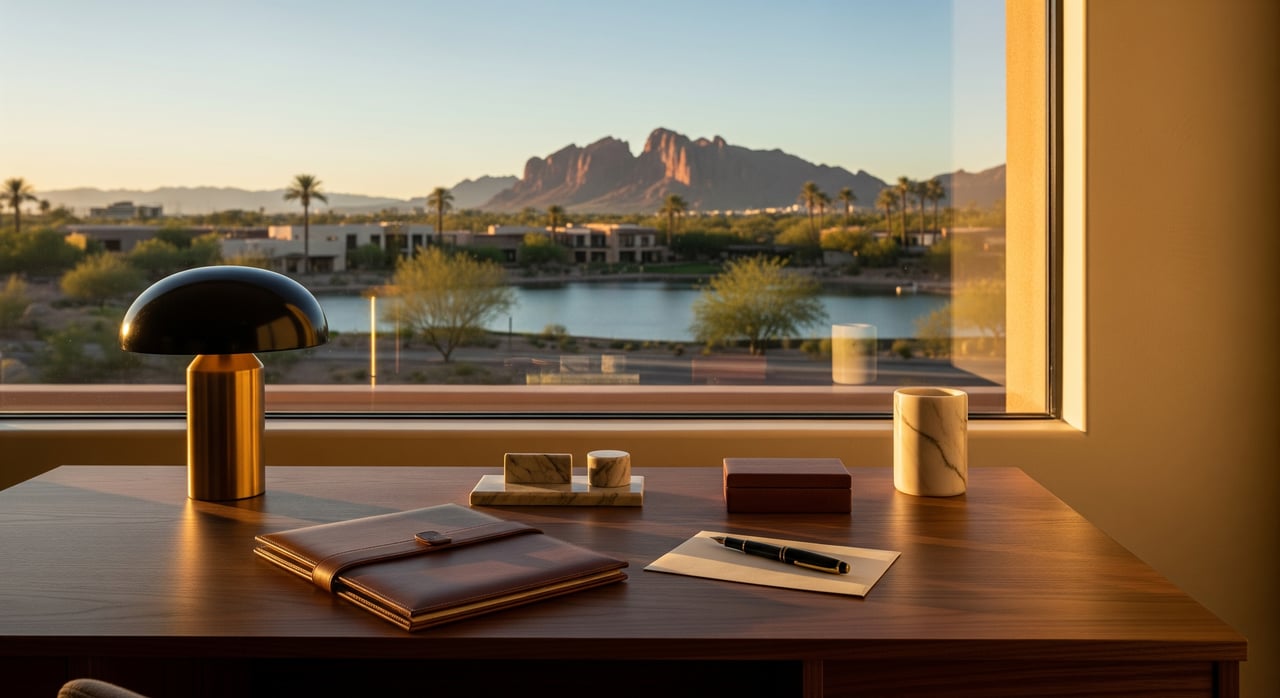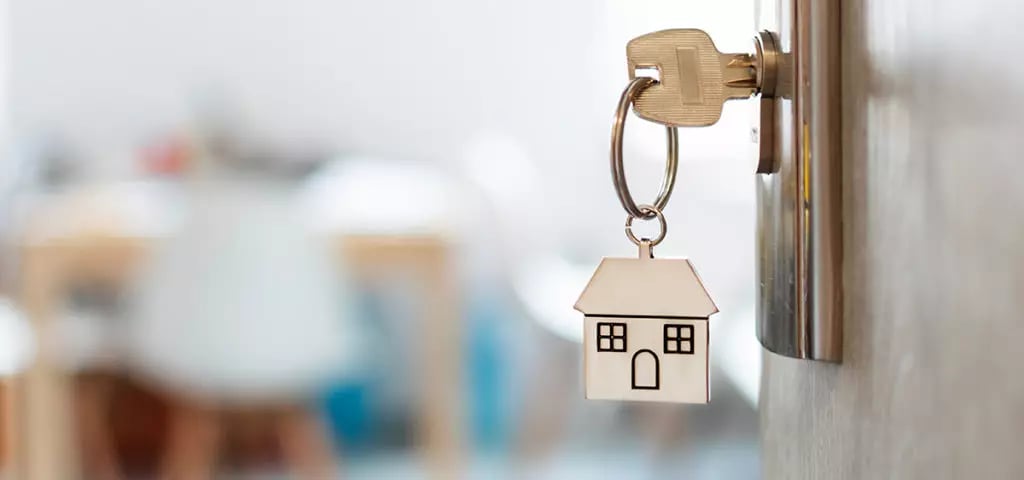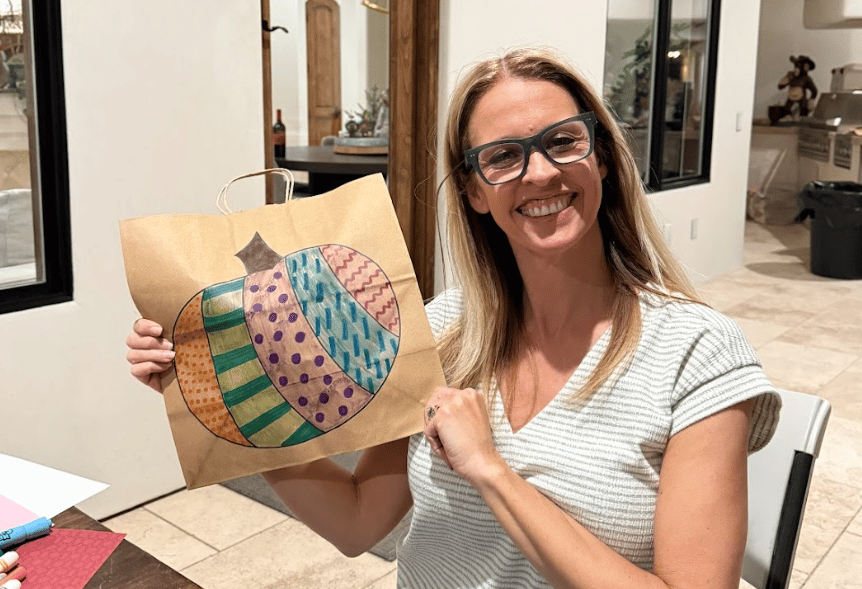
Chronicles of a First Time Home Buyer: Moving In - Part 3
First-Time Homebuyer Laura Jewett June 13, 2024

First-Time Homebuyer Laura Jewett June 13, 2024
{"html":"
In Part 2 we discussed the closing process of buying your first home. In this section, we will discuss what to do with it now that you own it! We find that many of our first time buyers are so excited about the concept of owning their first home, that they do not give much thought about all that they have to do once they have closed and are moved in. The excitement of moving your things in, setting up the house just how you envisioned in the weeks before closing and eating your first meal in your very own home are all moments where you might feel you need to pinch yourself to believe it is really true…but then slowly the reality and enormity of it all sets in and the questions of “How does this work?”or “What do I do with this?” and “Is this important?” all start coming into play.
You are likely full of mixed emotions at this stage and excited at the prospect of finally living in a space that you can make totally your own without the oversight of a landlord. On the other hand, you are likely having “adulting” moments thinking of all of the things that you are now responsible for! But along with all of the joy and excitement can also come some worry of not knowing all that it takes to pay for and care for your home.
You signed a mountain of paperwork at closing and it probably all seems like a blur or a distant memory by now. However, in this paperwork is the answer to these questions... How do I pay for my mortgage and when is my first payment due? Depending on your mortgage company, most companies will transfer your loan to a 3rd party company that will service the loan. Your first payment is paid a month or two after your closing date, depending on what time of the month you closed. Make sure to reach out to your lender to verify which company your loan is being transferred to.
Unfortunately, there are a ton of scammers out in the world that will be reaching out to you. Since your house is public record, you will be getting mail from all sorts of vendors offering you their services and this will inevitably include some scammers - whose mail often looks very official and legitimate. BE CAREFUL! Always double check with your agent or loan officer before doing anything related to changing your loan or payment information. The 3rd party company will send you a packet in the mail with details on how to make your first payment. It is best if you are able to set up autopay for your monthly mortgage payments to ensure that they are paid on time. This will help you build a strong credit history and score.
Pro Tip: Don’t be embarrassed or afraid to reach out and ask questions! Your real estate team is there to help and support you.
The title company will collect association dues at closing according to your HOA’s instructions that will cover the next due assessment payment. If the assessments are paid quarterly in your subdivision, they will generally collect and pay the assessment to cover this next quarter. How much is being collected and how long it covers you for is available on your Settlement Statement from the title company. Definition: The HUD-1 Settlement Statement itemizes the amounts to be paid by the buyer and the seller at closing. Items on the statement include: real estate commissions, loan fees, points,escrow amounts, pre-paid amounts for insurance and taxes, HOA transfer fees and pre-paid charges, home warranty plans and any other fee related to the transfer of the property from the seller to the buyer.
NOTE: The HUD-1 Settlement Statement is also known as the “closing statement” or “settlement sheet” and this is an important document that you will need to save after closing and provide to your tax preparer or have available if you are preparing your own taxes.
Make sure to review this information to ensure that you understand when your next payment is due. Most HOA’s will mail you a welcome packet that includes payment instructions and options. Many are utilizing online platforms now that allow you to sign up for an account to make your payments, stay informed of community going ons and events, submit architectural design requests/changes, etc….And if you are wondering what “architectural design requests” are…If you live in a community with an HOA, you are governed by CC&R’s (Covenants, Conditions and Restrictions). Contract Tip: You will receive a copy of the CC&R’s from the title company and you have five days after receipt of the information from the seller(s) or homeowners association to provide written notice to the seller of any items disapproved. The CC&R documents are often VERY lengthy and written in legalese that can be difficult to decipher. BUT IT IS IMPERATIVE THAT YOU REVIEW THIS DOCUMENT! Every HOA is different and sometimes the rules that govern them can be unexpected and prohibitive to the way that you want to live or enjoy your home. Not knowing this before you move-in can potentially be catastrophic. For instance, the CC&R’s may prohibit the quantity and/or type or size of pets that you can have. There may be restrictions on the types of trees and plants that you can plant or if you can have grass. You may be prohibited from parking vehicles in the street or even in your own driveway or from parking an RV or boat in your side yard. In almost all cases, if you intend on making changes to your home, these desired changes must be in compliance with and approved by the governing board of your HOA. These changes can consist of repainting the exterior, changing the front door, adding a security gate, changing RV or passage gates, adding a play structure in the backyard, adding a pergola or patio, etc. While living within the confines of an HOA community definitely has its advantages, you do need to ensure that there are not any restrictions that make living there prohibitive for you. This is where the architectural design request comes in.
While homeownership brings a sense of pride and accomplishment, it's essential to be prepared for the increased cost of living compared to renting an apartment. From higher utility bills to ongoing maintenance expenses, here's what you need to know to manage your expectations and budget effectively.
Increased Utility Costs: One of the first things you'll notice when transitioning from apartment living to homeownership is the increase in utility costs. In addition to electricity and gas, you'll likely have to pay for water, sewer, and trash services. Be prepared for these costs to be higher than what you were paying in your apartment, especially if you're moving into a larger home.
Landscape Maintenance: If your new home has a yard with grass, landscaping can be both rewarding and costly. While a lush lawn enhances curb appeal, it requires regular maintenance, including mowing, watering, fertilizing, and weed control. Factor in the cost of equipment or professional services to keep your yard looking its best.
Water Bills: Having a yard with grass or a garden can also result in higher water bills, especially during the warmer months. Be mindful of water usage and consider investing in water-saving irrigation systems or drought-resistant landscaping to help reduce costs.
Pool Maintenance: If your new home has a pool, be prepared for additional maintenance expenses. This includes cleaning, chemical treatments, equipment repairs, and potentially higher water bills. While pools offer enjoyment and relaxation, they come with ongoing costs that should be factored into your budget.
General Home Maintenance: Owning a home means taking responsibility for maintenance and repairs. Budget for routine tasks like HVAC system servicing, gutter cleaning, and roof inspections, as well as unexpected expenses like appliance repairs or plumbing issues. It's wise to set aside a portion of your monthly budget for these inevitable costs.
Budgeting for Larger Repairs and Replacements: In addition to routine maintenance, be prepared for larger repair or replacement costs. Major systems like the roof, HVAC, and water heater have a limited lifespan and may need to be replaced during your time in the home. Start building a home repair fund so you're financially prepared when these expenses arise.
While the increased cost of living associated with homeownership can seem daunting, proper planning and budgeting can help ease the transition. By understanding the additional expenses you'll face, from utility bills to maintenance costs, you can set realistic expectations and ensure your financial stability as a new homeowner.
Issues and unexpected surprises will come up! No matter how long you live in a home, there will never not be something that needs to be fixed or replaced or that you want to improve. It is one of the true joys and curses of homeownership! But at the end of the day, it is all yours to do with as you please and this is what makes it worth it! So take these issues and surprises in stride and prioritize your needs so that you do not become overwhelmed. And don’t forget to reach out to your agent if you need help, have a question or need a referral to have something done! Your agent should be there to support you through your entire homeownership journey…even long after the closing.
Remember, owning a home is an investment in your future, and with careful management of expenses, it can provide long-term stability and satisfaction. Welcome to the world of homeownership – enjoy the journey!
If you have any questions regarding this information presented here, please feel free to reach out. We pride ourselves in ensuring that our clients are well educated in the process of homeownership to ensure their comfort and success! In the next installment, we want to introduce you to some concepts and strategies to help ease the potential fear of buyer’s remorse and offer strategies to ensure that you are purchasing a home that not only meets your personal lifestyle goals but your financial goals as well.
","gjs":{"components":"[{\"content\":\"\"},{\"name\":\"Row\",\"droppable\":\".gjs-cell\",\"resizable\":{\"tl\":0,\"tc\":0,\"tr\":0,\"cl\":0,\"cr\":0,\"bl\":0,\"br\":0,\"minDim\":1},\"content\":\"\",\"classes\":[{\"name\":\"gjs-row\",\"label\":\"gjs-row\",\"type\":1,\"active\":true,\"private\":1,\"protected\":false}],\"attributes\":{\"id\":\"ibu1\"},\"components\":[{\"name\":\"Cell\",\"draggable\":\".gjs-row\",\"stylable-require\":[\"flex-basis\"],\"unstylable\":[\"width\"],\"resizable\":{\"tl\":0,\"tc\":0,\"tr\":0,\"cl\":0,\"cr\":1,\"bl\":0,\"br\":0,\"minDim\":1,\"bc\":0,\"currentUnit\":1,\"step\":0.2,\"keyWidth\":\"flex-basis\"},\"content\":\"\",\"classes\":[{\"name\":\"gjs-cell\",\"label\":\"gjs-cell\",\"type\":1,\"active\":true,\"private\":1,\"protected\":false}],\"components\":[{\"type\":\"text\",\"status\":\"selected\",\"content\":\"
In Part 2 we discussed the closing process of buying your first home. In this section, we will discuss what to do with it now that you own it! We find that many of our first time buyers are so excited about the concept of owning their first home, that they do not give much thought about all that they have to do once they have closed and are moved in. The excitement of moving your things in, setting up the house just how you envisioned in the weeks before closing and eating your first meal in your very own home are all moments where you might feel you need to pinch yourself to believe it is really true…but then slowly the reality and enormity of it all sets in and the questions of “How does this work?”or “What do I do with this?” and “Is this important?” all start coming into play.
\",\"attributes\":{\"id\":\"i9el\"},\"activeOnRender\":0},{\"name\":\"Row\",\"droppable\":\".gjs-cell\",\"resizable\":{\"tl\":0,\"tc\":0,\"tr\":0,\"cl\":0,\"cr\":0,\"bl\":0,\"br\":0,\"minDim\":1},\"content\":\"\",\"classes\":[{\"name\":\"gjs-row\",\"label\":\"gjs-row\",\"type\":1,\"active\":true,\"private\":1,\"protected\":false}],\"attributes\":{\"id\":\"i7xfn\"},\"components\":[{\"name\":\"Cell\",\"draggable\":\".gjs-row\",\"stylable-require\":[\"flex-basis\"],\"unstylable\":[\"width\"],\"resizable\":{\"tl\":0,\"tc\":0,\"tr\":0,\"cl\":0,\"cr\":1,\"bl\":0,\"br\":0,\"minDim\":1,\"bc\":0,\"currentUnit\":1,\"step\":0.2,\"keyWidth\":\"flex-basis\"},\"content\":\"\",\"classes\":[{\"name\":\"gjs-cell\",\"label\":\"gjs-cell\",\"type\":1,\"active\":true,\"private\":1,\"protected\":false}],\"components\":[{\"type\":\"image\",\"void\":true,\"content\":\"\",\"attributes\":{\"src\":\"https://res.cloudinary.com/luxuryp/images/f_auto,q_auto/ht0yjex1ydpxqc2wehnd/screenshot-2024-06-06-130430\",\"id\":\"in98b\"},\"src\":\"https://res.cloudinary.com/luxuryp/images/f_auto,q_auto/ht0yjex1ydpxqc2wehnd/screenshot-2024-06-06-130430\"},{\"name\":\"Row\",\"droppable\":\".gjs-cell\",\"resizable\":{\"tl\":0,\"tc\":0,\"tr\":0,\"cl\":0,\"cr\":0,\"bl\":0,\"br\":0,\"minDim\":1},\"content\":\"\",\"classes\":[{\"name\":\"gjs-row\",\"label\":\"gjs-row\",\"type\":1,\"active\":true,\"private\":1,\"protected\":false}],\"attributes\":{\"id\":\"ict3c\"},\"components\":[{\"name\":\"Cell\",\"draggable\":\".gjs-row\",\"stylable-require\":[\"flex-basis\"],\"unstylable\":[\"width\"],\"resizable\":{\"tl\":0,\"tc\":0,\"tr\":0,\"cl\":0,\"cr\":1,\"bl\":0,\"br\":0,\"minDim\":1,\"bc\":0,\"currentUnit\":1,\"step\":0.2,\"keyWidth\":\"flex-basis\"},\"content\":\"\",\"classes\":[{\"name\":\"gjs-cell\",\"label\":\"gjs-cell\",\"type\":1,\"active\":true,\"private\":1,\"protected\":false}]}]}],\"open\":1}],\"open\":1}],\"open\":1}],\"open\":1},{\"name\":\"Row\",\"droppable\":\".gjs-cell\",\"resizable\":{\"tl\":0,\"tc\":0,\"tr\":0,\"cl\":0,\"cr\":0,\"bl\":0,\"br\":0,\"minDim\":1},\"content\":\"\",\"classes\":[{\"name\":\"gjs-row\",\"label\":\"gjs-row\",\"type\":1,\"active\":true,\"private\":1,\"protected\":false}],\"attributes\":{\"id\":\"irb3\"},\"components\":[{\"name\":\"Cell\",\"draggable\":\".gjs-row\",\"stylable-require\":[\"flex-basis\"],\"unstylable\":[\"width\"],\"resizable\":{\"tl\":0,\"tc\":0,\"tr\":0,\"cl\":0,\"cr\":1,\"bl\":0,\"br\":0,\"minDim\":1,\"bc\":0,\"currentUnit\":1,\"step\":0.2,\"keyWidth\":\"flex-basis\"},\"content\":\"\",\"classes\":[{\"name\":\"gjs-cell\",\"label\":\"gjs-cell\",\"type\":1,\"active\":true,\"private\":1,\"protected\":false}],\"attributes\":{\"id\":\"i47b\"},\"components\":[{\"type\":\"text\",\"content\":\"
You are likely full of mixed emotions at this stage and excited at the prospect of finally living in a space that you can make totally your own without the oversight of a landlord. On the other hand, you are likely having “adulting” moments thinking of all of the things that you are now responsible for! But along with all of the joy and excitement can also come some worry of not knowing all that it takes to pay for and care for your home.
\",\"attributes\":{\"id\":\"i83d\"},\"activeOnRender\":0}],\"open\":0}],\"open\":0},{\"name\":\"Row\",\"droppable\":\".gjs-cell\",\"resizable\":{\"tl\":0,\"tc\":0,\"tr\":0,\"cl\":0,\"cr\":0,\"bl\":0,\"br\":0,\"minDim\":1},\"content\":\"\",\"classes\":[{\"name\":\"gjs-row\",\"label\":\"gjs-row\",\"type\":1,\"active\":true,\"private\":1,\"protected\":false}],\"attributes\":{\"id\":\"iv1ib\"},\"components\":[{\"name\":\"Cell\",\"draggable\":\".gjs-row\",\"stylable-require\":[\"flex-basis\"],\"unstylable\":[\"width\"],\"resizable\":{\"tl\":0,\"tc\":0,\"tr\":0,\"cl\":0,\"cr\":1,\"bl\":0,\"br\":0,\"minDim\":1,\"bc\":0,\"currentUnit\":1,\"step\":0.2,\"keyWidth\":\"flex-basis\"},\"content\":\"\",\"classes\":[{\"name\":\"gjs-cell\",\"label\":\"gjs-cell\",\"type\":1,\"active\":true,\"private\":1,\"protected\":false}],\"attributes\":{\"id\":\"igaw2\"},\"components\":[{\"type\":\"text\",\"content\":\"
You signed a mountain of paperwork at closing and it probably all seems like a blur or a distant memory by now. However, in this paperwork is the answer to these questions... How do I pay for my mortgage and when is my first payment due? Depending on your mortgage company, most companies will transfer your loan to a 3rd party company that will service the loan. Your first payment is paid a month or two after your closing date, depending on what time of the month you closed. Make sure to reach out to your lender to verify which company your loan is being transferred to.
\",\"attributes\":{\"id\":\"i2z2y\"},\"activeOnRender\":0,\"view\":\"\"}],\"open\":0,\"view\":\"\"}],\"open\":0,\"view\":\"\"},{\"name\":\"Row\",\"droppable\":\".gjs-cell\",\"resizable\":{\"tl\":0,\"tc\":0,\"tr\":0,\"cl\":0,\"cr\":0,\"bl\":0,\"br\":0,\"minDim\":1},\"content\":\"\",\"classes\":[{\"name\":\"gjs-row\",\"label\":\"gjs-row\",\"type\":1,\"active\":true,\"private\":1,\"protected\":false}],\"attributes\":{\"id\":\"iqss9\"},\"components\":[{\"name\":\"Cell\",\"draggable\":\".gjs-row\",\"stylable-require\":[\"flex-basis\"],\"unstylable\":[\"width\"],\"resizable\":{\"tl\":0,\"tc\":0,\"tr\":0,\"cl\":0,\"cr\":1,\"bl\":0,\"br\":0,\"minDim\":1,\"bc\":0,\"currentUnit\":1,\"step\":0.2,\"keyWidth\":\"flex-basis\"},\"content\":\"\",\"classes\":[{\"name\":\"gjs-cell\",\"label\":\"gjs-cell\",\"type\":1,\"active\":true,\"private\":1,\"protected\":false}],\"components\":[{\"type\":\"image\",\"void\":true,\"content\":\"\",\"attributes\":{\"src\":\"https://images.unsplash.com/photo-1634733988138-bf2c3a2a13fa?ixid=M3w0MTQ1MnwwfDF8c2VhcmNofDN8fGJpbGxzfGVufDB8fHx8MTcxNzcwNDIxOXww&ixlib=rb-4.0.3&q=80&w=1280\",\"id\":\"ivwsm\"},\"src\":\"https://images.unsplash.com/photo-1634733988138-bf2c3a2a13fa?ixid=M3w0MTQ1MnwwfDF8c2VhcmNofDN8fGJpbGxzfGVufDB8fHx8MTcxNzcwNDIxOXww&ixlib=rb-4.0.3&q=80&w=1280\"}],\"open\":0}],\"open\":0},{\"name\":\"Row\",\"droppable\":\".gjs-cell\",\"resizable\":{\"tl\":0,\"tc\":0,\"tr\":0,\"cl\":0,\"cr\":0,\"bl\":0,\"br\":0,\"minDim\":1},\"content\":\"\",\"classes\":[{\"name\":\"gjs-row\",\"label\":\"gjs-row\",\"type\":1,\"active\":true,\"private\":1,\"protected\":false}],\"attributes\":{\"id\":\"i77s7\"},\"components\":[{\"name\":\"Cell\",\"draggable\":\".gjs-row\",\"stylable-require\":[\"flex-basis\"],\"unstylable\":[\"width\"],\"resizable\":{\"tl\":0,\"tc\":0,\"tr\":0,\"cl\":0,\"cr\":1,\"bl\":0,\"br\":0,\"minDim\":1,\"bc\":0,\"currentUnit\":1,\"step\":0.2,\"keyWidth\":\"flex-basis\"},\"content\":\"\",\"classes\":[{\"name\":\"gjs-cell\",\"label\":\"gjs-cell\",\"type\":1,\"active\":true,\"private\":1,\"protected\":false}],\"attributes\":{\"id\":\"itjke\"},\"components\":[{\"type\":\"text\",\"content\":\"
Unfortunately, there are a ton of scammers out in the world that will be reaching out to you. Since your house is public record, you will be getting mail from all sorts of vendors offering you their services and this will inevitably include some scammers - whose mail often looks very official and legitimate. BE CAREFUL! Always double check with your agent or loan officer before doing anything related to changing your loan or payment information. The 3rd party company will send you a packet in the mail with details on how to make your first payment. It is best if you are able to set up autopay for your monthly mortgage payments to ensure that they are paid on time. This will help you build a strong credit history and score.
Pro Tip: Don’t be embarrassed or afraid to reach out and ask questions! Your real estate team is there to help and support you.
\",\"attributes\":{\"id\":\"iiat7\"},\"activeOnRender\":0,\"view\":\"\"},{\"name\":\"Row\",\"droppable\":\".gjs-cell\",\"resizable\":{\"tl\":0,\"tc\":0,\"tr\":0,\"cl\":0,\"cr\":0,\"bl\":0,\"br\":0,\"minDim\":1},\"content\":\"\",\"classes\":[{\"name\":\"gjs-row\",\"label\":\"gjs-row\",\"type\":1,\"active\":true,\"private\":1,\"protected\":false}],\"attributes\":{\"id\":\"inxjx\"},\"components\":[{\"name\":\"Cell\",\"draggable\":\".gjs-row\",\"stylable-require\":[\"flex-basis\"],\"unstylable\":[\"width\"],\"resizable\":{\"tl\":0,\"tc\":0,\"tr\":0,\"cl\":0,\"cr\":1,\"bl\":0,\"br\":0,\"minDim\":1,\"bc\":0,\"currentUnit\":1,\"step\":0.2,\"keyWidth\":\"flex-basis\"},\"content\":\"\",\"classes\":[{\"name\":\"gjs-cell\",\"label\":\"gjs-cell\",\"type\":1,\"active\":true,\"private\":1,\"protected\":false}],\"components\":[{\"type\":\"image\",\"void\":true,\"content\":\"\",\"attributes\":{\"src\":\"https://images.unsplash.com/photo-1450101499163-c8848c66ca85?ixid=M3w0MTQ1MnwwfDF8c2VhcmNofDN8fGxvYW58ZW58MHx8fHwxNzE3NzA0NDUxfDA&ixlib=rb-4.0.3&q=80&w=1280\",\"id\":\"isrkm\"},\"src\":\"https://images.unsplash.com/photo-1450101499163-c8848c66ca85?ixid=M3w0MTQ1MnwwfDF8c2VhcmNofDN8fGxvYW58ZW58MHx8fHwxNzE3NzA0NDUxfDA&ixlib=rb-4.0.3&q=80&w=1280\"}],\"open\":0}],\"open\":0},{\"type\":\"text\",\"content\":\"
The title company will collect association dues at closing according to your HOA’s instructions that will cover the next due assessment payment. If the assessments are paid quarterly in your subdivision, they will generally collect and pay the assessment to cover this next quarter. How much is being collected and how long it covers you for is available on your Settlement Statement from the title company. Definition: The HUD-1 Settlement Statement itemizes the amounts to be paid by the buyer and the seller at closing. Items on the statement include: real estate commissions, loan fees, points,escrow amounts, pre-paid amounts for insurance and taxes, HOA transfer fees and pre-paid charges, home warranty plans and any other fee related to the transfer of the property from the seller to the buyer.
NOTE: The HUD-1 Settlement Statement is also known as the “closing statement” or “settlement sheet” and this is an important document that you will need to save after closing and provide to your tax preparer or have available if you are preparing your own taxes.
Make sure to review this information to ensure that you understand when your next payment is due. Most HOA’s will mail you a welcome packet that includes payment instructions and options. Many are utilizing online platforms now that allow you to sign up for an account to make your payments, stay informed of community going ons and events, submit architectural design requests/changes, etc….And if you are wondering what “architectural design requests” are…If you live in a community with an HOA, you are governed by CC&R’s (Covenants, Conditions and Restrictions). Contract Tip: You will receive a copy of the CC&R’s from the title company and you have five days after receipt of the information from the seller(s) or homeowners association to provide written notice to the seller of any items disapproved. The CC&R documents are often VERY lengthy and written in legalese that can be difficult to decipher. BUT IT IS IMPERATIVE THAT YOU REVIEW THIS DOCUMENT! Every HOA is different and sometimes the rules that govern them can be unexpected and prohibitive to the way that you want to live or enjoy your home. Not knowing this before you move-in can potentially be catastrophic. For instance, the CC&R’s may prohibit the quantity and/or type or size of pets that you can have. There may be restrictions on the types of trees and plants that you can plant or if you can have grass. You may be prohibited from parking vehicles in the street or even in your own driveway or from parking an RV or boat in your side yard. In almost all cases, if you intend on making changes to your home, these desired changes must be in compliance with and approved by the governing board of your HOA. These changes can consist of repainting the exterior, changing the front door, adding a security gate, changing RV or passage gates, adding a play structure in the backyard, adding a pergola or patio, etc. While living within the confines of an HOA community definitely has its advantages, you do need to ensure that there are not any restrictions that make living there prohibitive for you. This is where the architectural design request comes in.
\",\"attributes\":{\"id\":\"ivunz\"},\"activeOnRender\":0,\"view\":\"\"},{\"name\":\"Row\",\"droppable\":\".gjs-cell\",\"resizable\":{\"tl\":0,\"tc\":0,\"tr\":0,\"cl\":0,\"cr\":0,\"bl\":0,\"br\":0,\"minDim\":1},\"content\":\"\",\"classes\":[{\"name\":\"gjs-row\",\"label\":\"gjs-row\",\"type\":1,\"active\":true,\"private\":1,\"protected\":false}],\"attributes\":{\"id\":\"i02f4\"},\"components\":[{\"name\":\"Cell\",\"draggable\":\".gjs-row\",\"stylable-require\":[\"flex-basis\"],\"unstylable\":[\"width\"],\"resizable\":{\"tl\":0,\"tc\":0,\"tr\":0,\"cl\":0,\"cr\":1,\"bl\":0,\"br\":0,\"minDim\":1,\"bc\":0,\"currentUnit\":1,\"step\":0.2,\"keyWidth\":\"flex-basis\"},\"content\":\"\",\"classes\":[{\"name\":\"gjs-cell\",\"label\":\"gjs-cell\",\"type\":1,\"active\":true,\"private\":1,\"protected\":false}],\"components\":[{\"type\":\"image\",\"void\":true,\"content\":\"\",\"attributes\":{\"src\":\"https://images.unsplash.com/photo-1565402170291-8491f14678db?ixid=M3w0MTQ1MnwwfDF8c2VhcmNofDF8fGhvYXxlbnwwfHx8fDE3MTc3MDUxMDB8MA&ixlib=rb-4.0.3&q=80&w=1280\",\"id\":\"i3cl9\"},\"src\":\"https://images.unsplash.com/photo-1565402170291-8491f14678db?ixid=M3w0MTQ1MnwwfDF8c2VhcmNofDF8fGhvYXxlbnwwfHx8fDE3MTc3MDUxMDB8MA&ixlib=rb-4.0.3&q=80&w=1280\"}],\"open\":0}],\"open\":0}],\"open\":0,\"view\":\"\"}],\"open\":0,\"view\":\"\"},{\"name\":\"Row\",\"droppable\":\".gjs-cell\",\"resizable\":{\"tl\":0,\"tc\":0,\"tr\":0,\"cl\":0,\"cr\":0,\"bl\":0,\"br\":0,\"minDim\":1},\"content\":\"\",\"classes\":[{\"name\":\"gjs-row\",\"label\":\"gjs-row\",\"type\":1,\"active\":true,\"private\":1,\"protected\":false}],\"attributes\":{\"id\":\"i5nsj\"},\"components\":[{\"name\":\"Cell\",\"draggable\":\".gjs-row\",\"stylable-require\":[\"flex-basis\"],\"unstylable\":[\"width\"],\"resizable\":{\"tl\":0,\"tc\":0,\"tr\":0,\"cl\":0,\"cr\":1,\"bl\":0,\"br\":0,\"minDim\":1,\"bc\":0,\"currentUnit\":1,\"step\":0.2,\"keyWidth\":\"flex-basis\"},\"content\":\"\",\"classes\":[{\"name\":\"gjs-cell\",\"label\":\"gjs-cell\",\"type\":1,\"active\":true,\"private\":1,\"protected\":false}],\"attributes\":{\"id\":\"ilsbt\"},\"components\":[{\"type\":\"text\",\"content\":\"
While homeownership brings a sense of pride and accomplishment, it's essential to be prepared for the increased cost of living compared to renting an apartment. From higher utility bills to ongoing maintenance expenses, here's what you need to know to manage your expectations and budget effectively.
Increased Utility Costs: One of the first things you'll notice when transitioning from apartment living to homeownership is the increase in utility costs. In addition to electricity and gas, you'll likely have to pay for water, sewer, and trash services. Be prepared for these costs to be higher than what you were paying in your apartment, especially if you're moving into a larger home.
Landscape Maintenance: If your new home has a yard with grass, landscaping can be both rewarding and costly. While a lush lawn enhances curb appeal, it requires regular maintenance, including mowing, watering, fertilizing, and weed control. Factor in the cost of equipment or professional services to keep your yard looking its best.
Water Bills: Having a yard with grass or a garden can also result in higher water bills, especially during the warmer months. Be mindful of water usage and consider investing in water-saving irrigation systems or drought-resistant landscaping to help reduce costs.
Pool Maintenance: If your new home has a pool, be prepared for additional maintenance expenses. This includes cleaning, chemical treatments, equipment repairs, and potentially higher water bills. While pools offer enjoyment and relaxation, they come with ongoing costs that should be factored into your budget.
General Home Maintenance: Owning a home means taking responsibility for maintenance and repairs. Budget for routine tasks like HVAC system servicing, gutter cleaning, and roof inspections, as well as unexpected expenses like appliance repairs or plumbing issues. It's wise to set aside a portion of your monthly budget for these inevitable costs.
Budgeting for Larger Repairs and Replacements: In addition to routine maintenance, be prepared for larger repair or replacement costs. Major systems like the roof, HVAC, and water heater have a limited lifespan and may need to be replaced during your time in the home. Start building a home repair fund so you're financially prepared when these expenses arise.
\",\"attributes\":{\"id\":\"i6yzl\"},\"activeOnRender\":0}],\"open\":0}],\"open\":0},{\"name\":\"Row\",\"droppable\":\".gjs-cell\",\"resizable\":{\"tl\":0,\"tc\":0,\"tr\":0,\"cl\":0,\"cr\":0,\"bl\":0,\"br\":0,\"minDim\":1},\"content\":\"\",\"classes\":[{\"name\":\"gjs-row\",\"label\":\"gjs-row\",\"type\":1,\"active\":true,\"private\":1,\"protected\":false}],\"attributes\":{\"id\":\"iq2mn\"},\"components\":[{\"name\":\"Cell\",\"draggable\":\".gjs-row\",\"stylable-require\":[\"flex-basis\"],\"unstylable\":[\"width\"],\"resizable\":{\"tl\":0,\"tc\":0,\"tr\":0,\"cl\":0,\"cr\":1,\"bl\":0,\"br\":0,\"minDim\":1,\"bc\":0,\"currentUnit\":1,\"step\":0.2,\"keyWidth\":\"flex-basis\"},\"content\":\"\",\"classes\":[{\"name\":\"gjs-cell\",\"label\":\"gjs-cell\",\"type\":1,\"active\":true,\"private\":1,\"protected\":false}],\"components\":[{\"type\":\"image\",\"void\":true,\"content\":\"\",\"attributes\":{\"src\":\"https://images.unsplash.com/photo-1599682848475-09574d1db9c6?ixid=M3w0MTQ1MnwwfDF8c2VhcmNofDE2N3x8bW93aW5nJTIwbGF3bnxlbnwwfHx8fDE3MTc3MDUzNTJ8MA&ixlib=rb-4.0.3&q=80&w=1280\",\"id\":\"i06zc\"},\"src\":\"https://images.unsplash.com/photo-1599682848475-09574d1db9c6?ixid=M3w0MTQ1MnwwfDF8c2VhcmNofDE2N3x8bW93aW5nJTIwbGF3bnxlbnwwfHx8fDE3MTc3MDUzNTJ8MA&ixlib=rb-4.0.3&q=80&w=1280\"}],\"open\":0},{\"name\":\"Cell\",\"draggable\":\".gjs-row\",\"stylable-require\":[\"flex-basis\"],\"unstylable\":[\"width\"],\"resizable\":{\"tl\":0,\"tc\":0,\"tr\":0,\"cl\":0,\"cr\":1,\"bl\":0,\"br\":0,\"minDim\":1,\"bc\":0,\"currentUnit\":1,\"step\":0.2,\"keyWidth\":\"flex-basis\"},\"content\":\"\",\"classes\":[{\"name\":\"gjs-cell\",\"label\":\"gjs-cell\",\"type\":1,\"active\":true,\"private\":1,\"protected\":false}],\"attributes\":{\"id\":\"iggyk\"},\"components\":[{\"type\":\"image\",\"void\":true,\"content\":\"\",\"attributes\":{\"src\":\"https://images.unsplash.com/photo-1556010334-298f19160723?ixid=M3w0MTQ1MnwwfDF8c2VhcmNofDR8fHdhdGVyJTIwZmF1Y2V0fGVufDB8fHx8MTcxNzcwNTM4OXww&ixlib=rb-4.0.3&q=80&w=1280\",\"id\":\"it2m1\"},\"src\":\"https://images.unsplash.com/photo-1556010334-298f19160723?ixid=M3w0MTQ1MnwwfDF8c2VhcmNofDR8fHdhdGVyJTIwZmF1Y2V0fGVufDB8fHx8MTcxNzcwNTM4OXww&ixlib=rb-4.0.3&q=80&w=1280\"}],\"open\":0},{\"name\":\"Cell\",\"draggable\":\".gjs-row\",\"stylable-require\":[\"flex-basis\"],\"unstylable\":[\"width\"],\"resizable\":{\"tl\":0,\"tc\":0,\"tr\":0,\"cl\":0,\"cr\":1,\"bl\":0,\"br\":0,\"minDim\":1,\"bc\":0,\"currentUnit\":1,\"step\":0.2,\"keyWidth\":\"flex-basis\"},\"content\":\"\",\"classes\":[{\"name\":\"gjs-cell\",\"label\":\"gjs-cell\",\"type\":1,\"active\":true,\"private\":1,\"protected\":false}],\"attributes\":{\"id\":\"iadmi\"},\"components\":[{\"type\":\"image\",\"void\":true,\"content\":\"\",\"attributes\":{\"src\":\"https://images.unsplash.com/photo-1591285713698-598d587de63e?ixid=M3w0MTQ1MnwwfDF8c2VhcmNofDN8fHBvb2x8ZW58MHx8fHwxNzE3NjI3MDYwfDA&ixlib=rb-4.0.3&q=80&w=1280\",\"id\":\"ieryb\"},\"src\":\"https://images.unsplash.com/photo-1591285713698-598d587de63e?ixid=M3w0MTQ1MnwwfDF8c2VhcmNofDN8fHBvb2x8ZW58MHx8fHwxNzE3NjI3MDYwfDA&ixlib=rb-4.0.3&q=80&w=1280\"}],\"open\":0}],\"open\":0},{\"name\":\"Row\",\"droppable\":\".gjs-cell\",\"resizable\":{\"tl\":0,\"tc\":0,\"tr\":0,\"cl\":0,\"cr\":0,\"bl\":0,\"br\":0,\"minDim\":1},\"content\":\"\",\"classes\":[{\"name\":\"gjs-row\",\"label\":\"gjs-row\",\"type\":1,\"active\":true,\"private\":1,\"protected\":false}],\"attributes\":{\"id\":\"i4wbz\"},\"components\":[{\"name\":\"Cell\",\"draggable\":\".gjs-row\",\"stylable-require\":[\"flex-basis\"],\"unstylable\":[\"width\"],\"resizable\":{\"tl\":0,\"tc\":0,\"tr\":0,\"cl\":0,\"cr\":1,\"bl\":0,\"br\":0,\"minDim\":1,\"bc\":0,\"currentUnit\":1,\"step\":0.2,\"keyWidth\":\"flex-basis\"},\"content\":\"\",\"classes\":[{\"name\":\"gjs-cell\",\"label\":\"gjs-cell\",\"type\":1,\"active\":true,\"private\":1,\"protected\":false}],\"components\":[{\"type\":\"text\",\"content\":\"
While the increased cost of living associated with homeownership can seem daunting, proper planning and budgeting can help ease the transition. By understanding the additional expenses you'll face, from utility bills to maintenance costs, you can set realistic expectations and ensure your financial stability as a new homeowner.
Issues and unexpected surprises will come up! No matter how long you live in a home, there will never not be something that needs to be fixed or replaced or that you want to improve. It is one of the true joys and curses of homeownership! But at the end of the day, it is all yours to do with as you please and this is what makes it worth it! So take these issues and surprises in stride and prioritize your needs so that you do not become overwhelmed. And don’t forget to reach out to your agent if you need help, have a question or need a referral to have something done! Your agent should be there to support you through your entire homeownership journey…even long after the closing.
Remember, owning a home is an investment in your future, and with careful management of expenses, it can provide long-term stability and satisfaction. Welcome to the world of homeownership – enjoy the journey!
If you have any questions regarding this information presented here, please feel free to reach out. We pride ourselves in ensuring that our clients are well educated in the process of homeownership to ensure their comfort and success! In the next installment, we want to introduce you to some concepts and strategies to help ease the potential fear of buyer’s remorse and offer strategies to ensure that you are purchasing a home that not only meets your personal lifestyle goals but your financial goals as well.
\",\"attributes\":{\"id\":\"iwdeg\"},\"activeOnRender\":0}],\"open\":0}],\"open\":0},{\"name\":\"Row\",\"droppable\":\".gjs-cell\",\"resizable\":{\"tl\":0,\"tc\":0,\"tr\":0,\"cl\":0,\"cr\":0,\"bl\":0,\"br\":0,\"minDim\":1},\"content\":\"\",\"classes\":[{\"name\":\"gjs-row\",\"label\":\"gjs-row\",\"type\":1,\"active\":true,\"private\":1,\"protected\":false}],\"open\":0,\"view\":\"\"}]","assets":"[]","css":"* { box-sizing: border-box; } body {margin: 0;}ul{list-style:inherit;}.gjs-row{display:flex;justify-content:flex-start;align-items:stretch;flex-wrap:nowrap;padding-top:10px;padding-right:10px;padding-bottom:10px;padding-left:10px;}.gjs-cell{min-height:75px;flex-grow:1;flex-basis:100%;}#i9el{padding:0px;text-align:center;font-size:18px;}#i83d{padding:0px;text-align:center;}#i2z2y{padding:0px;text-align:center;}#iiat7{padding:0px;text-align:center;}#ivunz{padding:0px;text-align:center;}#in98b{width:500px;margin:0 0 0 300px;}#ivwsm{width:500px;margin:0 0 0 300px;}#isrkm{width:500px;margin:0 0 0 300px;}#i3cl9{width:500px;margin:0 0 0 300px;}#i6yzl{padding:0px;text-align:center;}.wrapper .card-wrapper{padding-top:8px;padding-right:8px;padding-bottom:8px;padding-left:8px;margin-top:10px;margin-right:10px;margin-bottom:10px;margin-left:10px;text-decoration-line:none;text-decoration-thickness:initial;text-decoration-style:initial;text-decoration-color:initial;color:black;}.wrapper .card-wrapper .card{display:flex;flex-direction:column;box-shadow:lightgrey 4px 4px 14px;}.wrapper .card-wrapper .card .card-image-wrapper{display:flex;justify-content:center;align-items:center;height:180px;width:100%;overflow-x:hidden;overflow-y:hidden;}.wrapper .card-wrapper .card .card-image-wrapper img{object-fit:cover;min-height:100%;max-width:100%;}.wrapper .card-wrapper .card .card-content{padding-top:28px;padding-right:28px;padding-bottom:28px;padding-left:28px;background-color:white;}.wrapper .card-wrapper .card .card-content .card-content-header{display:flex;justify-content:space-between;align-items:baseline;padding-bottom:16px;}.wrapper .card-wrapper .card .card-content .card-content-header h5{margin-top:0px;margin-right:0px;margin-bottom:0px;margin-left:0px;flex-grow:3;flex-shrink:1;flex-basis:0%;}.wrapper .card-wrapper .card .card-content .card-content-header p{margin-top:0px;margin-right:0px;margin-bottom:0px;margin-left:0px;color:silver;flex-grow:1;flex-shrink:1;flex-basis:0%;text-align:right;}#i06zc{width:200px;margin:0 0 0 100px;}#it2m1{width:200px;margin:0 0 0 100px;}#ieryb{width:200px;height:300px;margin:0 0 0 100px;}#iadmi{height:300px;}#iwdeg{padding:0px;text-align:center;}@media (max-width: function(e){return e.theme.breakpoints.sm}px){.wrapper .card-wrapper{margin-top:0px;margin-right:0px;margin-bottom:0px;margin-left:0px;width:100%;}}@media (max-width: 768px){.gjs-row{flex-wrap:wrap;}}","styles":"[{\"selectors\":[],\"selectorsAdd\":\"ul\",\"style\":{\"list-style\":\"inherit\"}},{\"selectors\":[{\"name\":\"gjs-row\",\"label\":\"gjs-row\",\"type\":1,\"active\":true,\"private\":1,\"protected\":false}],\"style\":{\"display\":\"flex\",\"justify-content\":\"flex-start\",\"align-items\":\"stretch\",\"flex-wrap\":\"nowrap\",\"padding-top\":\"10px\",\"padding-right\":\"10px\",\"padding-bottom\":\"10px\",\"padding-left\":\"10px\"}},{\"selectors\":[{\"name\":\"gjs-row\",\"label\":\"gjs-row\",\"type\":1,\"active\":true,\"private\":1,\"protected\":false}],\"style\":{\"flex-wrap\":\"wrap\"},\"mediaText\":\"(max-width: 768px)\",\"atRuleType\":\"media\"},{\"selectors\":[{\"name\":\"gjs-cell\",\"label\":\"gjs-cell\",\"type\":1,\"active\":true,\"private\":1,\"protected\":false}],\"style\":{\"min-height\":\"75px\",\"flex-grow\":\"1\",\"flex-basis\":\"100%\"}},{\"selectors\":[{\"name\":\"ibu1\",\"label\":\"ibu1\",\"type\":2,\"active\":true,\"private\":false,\"protected\":false}]},{\"selectors\":[{\"name\":\"i9el\",\"label\":\"i9el\",\"type\":2,\"active\":true,\"private\":false,\"protected\":false}],\"style\":{\"padding\":\"0px\",\"text-align\":\"center\",\"font-size\":\"18px\"}},{\"selectors\":[{\"name\":\"irb3\",\"label\":\"irb3\",\"type\":2,\"active\":true,\"private\":false,\"protected\":false}]},{\"selectors\":[{\"name\":\"i83d\",\"label\":\"i83d\",\"type\":2,\"active\":true,\"private\":false,\"protected\":false}],\"style\":{\"padding\":\"0px\",\"text-align\":\"center\"}},{\"selectors\":[{\"name\":\"i47b\",\"label\":\"i47b\",\"type\":2,\"active\":true,\"private\":false,\"protected\":false}]},{\"selectors\":[{\"name\":\"i2z2y\",\"label\":\"i2z2y\",\"type\":2,\"active\":true,\"private\":false,\"protected\":false}],\"style\":{\"padding\":\"0px\",\"text-align\":\"center\"}},{\"selectors\":[{\"name\":\"igaw2\",\"label\":\"igaw2\",\"type\":2,\"active\":true,\"private\":false,\"protected\":false}]},{\"selectors\":[{\"name\":\"iv1ib\",\"label\":\"iv1ib\",\"type\":2,\"active\":true,\"private\":false,\"protected\":false}]},{\"selectors\":[{\"name\":\"iiat7\",\"label\":\"iiat7\",\"type\":2,\"active\":true,\"private\":false,\"protected\":false}],\"style\":{\"padding\":\"0px\",\"text-align\":\"center\"}},{\"selectors\":[{\"name\":\"i77s7\",\"label\":\"i77s7\",\"type\":2,\"active\":true,\"private\":false,\"protected\":false}]},{\"selectors\":[{\"name\":\"itjke\",\"label\":\"itjke\",\"type\":2,\"active\":true,\"private\":false,\"protected\":false}]},{\"selectors\":[{\"name\":\"ivunz\",\"label\":\"ivunz\",\"type\":2,\"active\":true,\"private\":false,\"protected\":false}],\"style\":{\"padding\":\"0px\",\"text-align\":\"center\"}},{\"selectors\":[{\"name\":\"i7xfn\",\"label\":\"i7xfn\",\"type\":2,\"active\":true,\"private\":false,\"protected\":false}]},{\"selectors\":[{\"name\":\"in98b\",\"label\":\"in98b\",\"type\":2,\"active\":true,\"private\":false,\"protected\":false}],\"style\":{\"width\":\"500px\",\"margin\":\"0 0 0 300px\"}},{\"selectors\":[{\"name\":\"iqss9\",\"label\":\"iqss9\",\"type\":2,\"active\":true,\"private\":false,\"protected\":false}]},{\"selectors\":[{\"name\":\"ivwsm\",\"label\":\"ivwsm\",\"type\":2,\"active\":true,\"private\":false,\"protected\":false}],\"style\":{\"width\":\"500px\",\"margin\":\"0 0 0 300px\"}},{\"selectors\":[{\"name\":\"inxjx\",\"label\":\"inxjx\",\"type\":2,\"active\":true,\"private\":false,\"protected\":false}]},{\"selectors\":[{\"name\":\"isrkm\",\"label\":\"isrkm\",\"type\":2,\"active\":true,\"private\":false,\"protected\":false}],\"style\":{\"width\":\"500px\",\"margin\":\"0 0 0 300px\"}},{\"selectors\":[{\"name\":\"i02f4\",\"label\":\"i02f4\",\"type\":2,\"active\":true,\"private\":false,\"protected\":false}]},{\"selectors\":[{\"name\":\"i3cl9\",\"label\":\"i3cl9\",\"type\":2,\"active\":true,\"private\":false,\"protected\":false}],\"style\":{\"width\":\"500px\",\"margin\":\"0 0 0 300px\"}},{\"selectors\":[{\"name\":\"i5nsj\",\"label\":\"i5nsj\",\"type\":2,\"active\":true,\"private\":false,\"protected\":false}]},{\"selectors\":[{\"name\":\"ilsbt\",\"label\":\"ilsbt\",\"type\":2,\"active\":true,\"private\":false,\"protected\":false}]},{\"selectors\":[{\"name\":\"i6yzl\",\"label\":\"i6yzl\",\"type\":2,\"active\":true,\"private\":false,\"protected\":false}],\"style\":{\"padding\":\"0px\",\"text-align\":\"center\"}},{\"selectors\":[{\"name\":\"wrapper\",\"label\":\"wrapper\",\"type\":1,\"active\":true,\"private\":false,\"protected\":false}],\"style\":{\"display\":\"flex\",\"justify-content\":\"center\",\"flex-grow\":\"1\",\"flex-shrink\":\"1\",\"flex-basis\":\"0%\"}},{\"selectors\":[],\"selectorsAdd\":\".wrapper .card-wrapper\",\"style\":{\"padding-top\":\"8px\",\"padding-right\":\"8px\",\"padding-bottom\":\"8px\",\"padding-left\":\"8px\",\"margin-top\":\"10px\",\"margin-right\":\"10px\",\"margin-bottom\":\"10px\",\"margin-left\":\"10px\",\"text-decoration-line\":\"none\",\"text-decoration-thickness\":\"initial\",\"text-decoration-style\":\"initial\",\"text-decoration-color\":\"initial\",\"color\":\"black\"}},{\"selectors\":[],\"selectorsAdd\":\".wrapper .card-wrapper .card\",\"style\":{\"display\":\"flex\",\"flex-direction\":\"column\",\"box-shadow\":\"lightgrey 4px 4px 14px\"}},{\"selectors\":[],\"selectorsAdd\":\".wrapper .card-wrapper .card .card-image-wrapper\",\"style\":{\"display\":\"flex\",\"justify-content\":\"center\",\"align-items\":\"center\",\"height\":\"180px\",\"width\":\"100%\",\"overflow-x\":\"hidden\",\"overflow-y\":\"hidden\"}},{\"selectors\":[],\"selectorsAdd\":\".wrapper .card-wrapper .card .card-image-wrapper img\",\"style\":{\"object-fit\":\"cover\",\"min-height\":\"100%\",\"max-width\":\"100%\"}},{\"selectors\":[],\"selectorsAdd\":\".wrapper .card-wrapper .card .card-content\",\"style\":{\"padding-top\":\"28px\",\"padding-right\":\"28px\",\"padding-bottom\":\"28px\",\"padding-left\":\"28px\",\"background-color\":\"white\"}},{\"selectors\":[],\"selectorsAdd\":\".wrapper .card-wrapper .card .card-content .card-content-header\",\"style\":{\"display\":\"flex\",\"justify-content\":\"space-between\",\"align-items\":\"baseline\",\"padding-bottom\":\"16px\"}},{\"selectors\":[],\"selectorsAdd\":\".wrapper .card-wrapper .card .card-content .card-content-header h5\",\"style\":{\"margin-top\":\"0px\",\"margin-right\":\"0px\",\"margin-bottom\":\"0px\",\"margin-left\":\"0px\",\"flex-grow\":\"3\",\"flex-shrink\":\"1\",\"flex-basis\":\"0%\"}},{\"selectors\":[],\"selectorsAdd\":\".wrapper .card-wrapper .card .card-content .card-content-header p\",\"style\":{\"margin-top\":\"0px\",\"margin-right\":\"0px\",\"margin-bottom\":\"0px\",\"margin-left\":\"0px\",\"color\":\"silver\",\"flex-grow\":\"1\",\"flex-shrink\":\"1\",\"flex-basis\":\"0%\",\"text-align\":\"right\"}},{\"selectors\":[{\"name\":\"wrapper\",\"label\":\"wrapper\",\"type\":1,\"active\":true,\"private\":false,\"protected\":false}],\"style\":{\"padding-top\":\"0px\",\"padding-right\":\"0px\",\"padding-bottom\":\"0px\",\"padding-left\":\"0px\"},\"mediaText\":\"(max-width: function(e){return e.theme.breakpoints.sm}px)\",\"atRuleType\":\"media\"},{\"selectors\":[],\"selectorsAdd\":\".wrapper .card-wrapper\",\"style\":{\"margin-top\":\"0px\",\"margin-right\":\"0px\",\"margin-bottom\":\"0px\",\"margin-left\":\"0px\",\"width\":\"100%\"},\"mediaText\":\"(max-width: function(e){return e.theme.breakpoints.sm}px)\",\"atRuleType\":\"media\"},{\"selectors\":[{\"name\":\"card-image-wrapper\",\"label\":\"card-image-wrapper\",\"type\":1,\"active\":true,\"private\":false,\"protected\":false}]},{\"selectors\":[{\"name\":\"iq2mn\",\"label\":\"iq2mn\",\"type\":2,\"active\":true,\"private\":false,\"protected\":false}]},{\"selectors\":[{\"name\":\"i06zc\",\"label\":\"i06zc\",\"type\":2,\"active\":true,\"private\":false,\"protected\":false}],\"style\":{\"width\":\"200px\",\"margin\":\"0 0 0 100px\"}},{\"selectors\":[{\"name\":\"iggyk\",\"label\":\"iggyk\",\"type\":2,\"active\":true,\"private\":false,\"protected\":false}]},{\"selectors\":[{\"name\":\"it2m1\",\"label\":\"it2m1\",\"type\":2,\"active\":true,\"private\":false,\"protected\":false}],\"style\":{\"width\":\"200px\",\"margin\":\"0 0 0 100px\"}},{\"selectors\":[{\"name\":\"ieryb\",\"label\":\"ieryb\",\"type\":2,\"active\":true,\"private\":false,\"protected\":false}],\"style\":{\"width\":\"200px\",\"height\":\"300px\",\"margin\":\"0 0 0 100px\"}},{\"selectors\":[{\"name\":\"iadmi\",\"label\":\"iadmi\",\"type\":2,\"active\":true,\"private\":false,\"protected\":false}],\"style\":{\"height\":\"300px\"}},{\"selectors\":[{\"name\":\"i4wbz\",\"label\":\"i4wbz\",\"type\":2,\"active\":true,\"private\":false,\"protected\":false}]},{\"selectors\":[{\"name\":\"iwdeg\",\"label\":\"iwdeg\",\"type\":2,\"active\":true,\"private\":false,\"protected\":false}],\"style\":{\"padding\":\"0px\",\"text-align\":\"center\"}},{\"selectors\":[{\"name\":\"ict3c\",\"label\":\"ict3c\",\"type\":2,\"active\":true,\"private\":false,\"protected\":false}]}]"}}
Stay up to date on the latest real estate trends.





Investor Resources




Supporting your real estate goals with comprehensive information and expert advice. We look forward to the opportunity to serve you! Work with the team now!